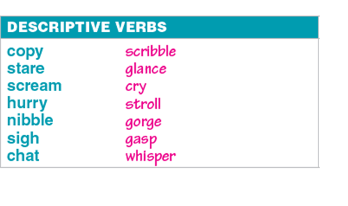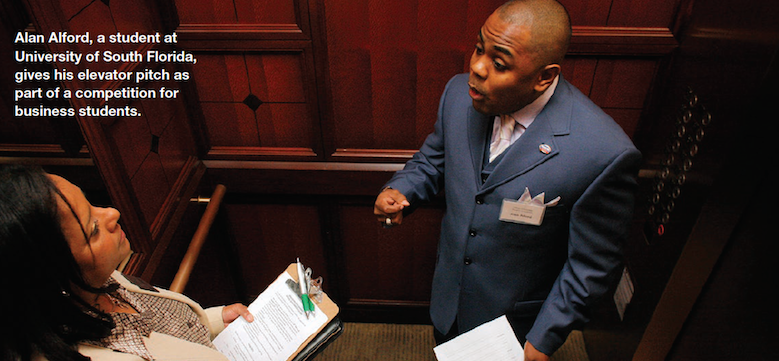What makes a confident English communicator? Is it always a student with a very advanced level of English? Not necessarily. I have worked with students who have a low intermediate level of English but who can communicate very effectively only using the English they know. On the other hand, I have also worked with students who have a very high level of English but who find the idea of talking in front of a large group of people, for example, very challenging and nerve-wracking. So what exactly makes a confident communicator and how we might help students who lack confidence?
To help us define what a confident communicator looks like, let’s start with a task. Here’s a short video of a very confident communicator, called Andrés, presenting himself. Try watching it with the SOUND OFF and decide what it is that tells you he’s a confident communicator.
With the sound off you probably noted that Andrés uses body language very effectively with eye contact and clear gestures. So what we see in communication is equally as important as (and some people would say more important than) what the communicator says.
Now watch the video of Andrés again with the SOUND ON and you’ll also notice how he delivers his personal presentation. His delivery is very fluent but not too fast and extremely clear. One of the reasons for this is that he uses pauses effectively. As you watch with the sound, read what he says below and notice how he pauses where you see the slash (/).
My name is / Andrés Ruzo. / I’m a Geothermal Scientist / and / a National Geographic Explorer./ You probably / know / the word / scientist. / But, / can you guess what a / Geo / thermal / Scientist / does? / Let me give you a hint. / The word / Geothermal / comes from / two Greek words./ Geo / which means Earth, / and / Therme / which means heat. / What do you think? / Exactly? / I am a scientist who studies / Earth’s/ heat./
It’s interesting that the language Andres uses to introduce himself is not particularly high level and he even tries to simplify and explain meaning of his job title. But by pausing the language in single words and chunks, and then stressing certain words, his delivery is particularly engaging.
So if body language and pronunciation are so important, how can we help students to apply these in their own communication?
First of all, for developing body language, try using activities in class where students have to use their bodies to communicate ideas. For example, mime activities are fun, memorable and they develop students confidence. So if I were teaching this set of descriptive verbs shown below (taken from World Link Level 4), I would mime one of them and students would have to guess which one.

Next, I’d ask a student to choose another one, mime it and the other students have to guess. This type of activity builds confidence and awareness of body language and it makes the language point more memorable. It can also work well in online classes as students have to move and communicate through their webcam.
To help students develop their delivery and add pausing in pronunciation, play students a recording, such as the one of the Andres, and have them mark where they think he pauses in his presentation. They’ll start to realize that we tend to pause where there is punctuation but also to emphasize certain words such as conjunctions and key content words. Having listened to a model version, students can apply this technique to their own classroom presentations.
Finally, we need to give students time to rehearse before they communicate and to give them strategies for rehearsing. Asking students to video themselves is a great way to prepare for a presentation similar to the one Andres gives. They can record themselves at home with their phone or using the record function on a tool like Zoom. They watch the recording back, notice things like their body language and delivery, and then think about what they can improve. Then they video themselves again, and again, and again, until they are happy with the final video and send it to their teacher for feedback or share with their classmates.
As a final example of what this might look like, we asked some students to answer questions about learning English and we included their responses in the video component of the World Link series. These students demonstrate how effective and motivating video can be as they confidently communicate their answers.
Of course, there is much more to being a confident communicator than just body language and pronunciation. If you’d like to know much more, watch the recording of my presentation ‘Developing confident communicators for the real world’.



I agree that body language is extremely important in communicating.